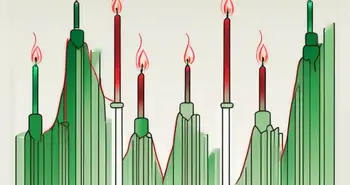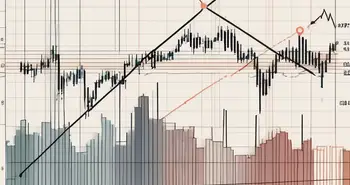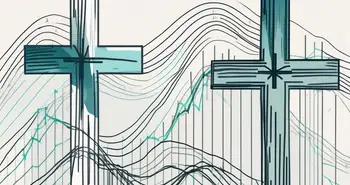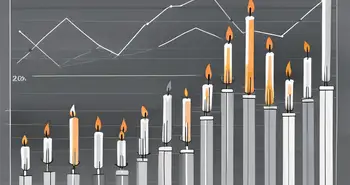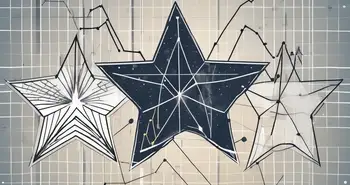The Downside of the Tasuki Gap: Exploring its Potential Drawbacks
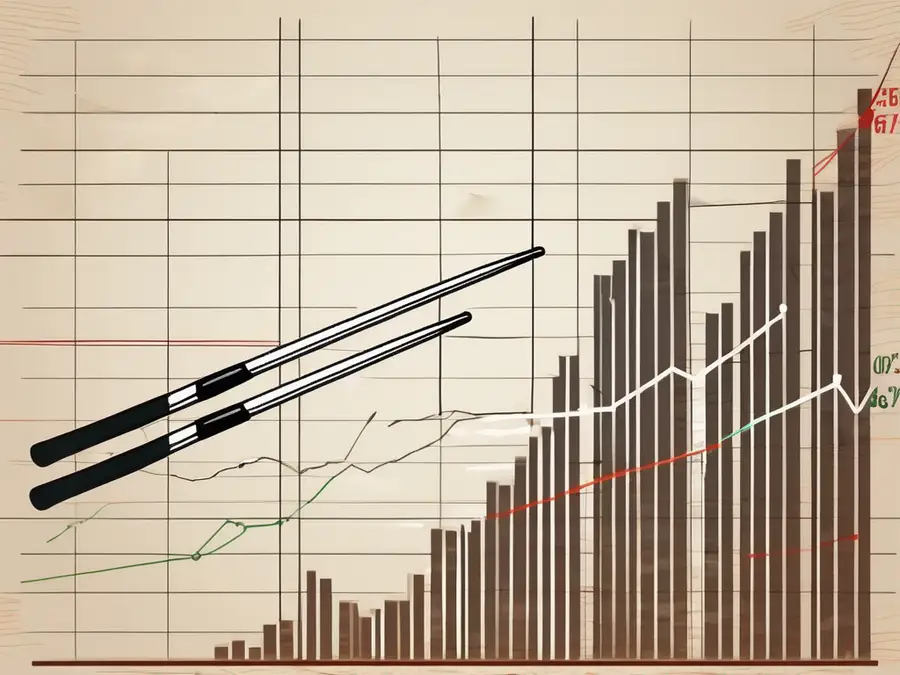
As an expert in technical analysis, I believe it is essential to explore both the advantages and disadvantages of various trading strategies. In this article, we will delve into the potential drawbacks of the Tasuki Gap, a popular chart pattern in the world of technical analysis. While the Tasuki Gap has its merits, it is crucial to be aware of its limitations to make well-informed trading decisions.
Understanding the Tasuki Gap
The Tasuki Gap is a chart pattern that occurs when there is a gap between the opening price of the second candlestick and the closing price of the first candlestick. This pattern often indicates a continuation of the existing trend, either bullish or bearish. Traders often use it as a signal to enter or exit a trade.
When analyzing the Tasuki Gap, it is important to consider the context in which it appears. Is the market experiencing a strong uptrend or downtrend? Are there any significant support or resistance levels nearby? These factors can influence the reliability of the pattern and the potential trading opportunities it presents.
One interesting aspect of the Tasuki Gap is its ability to provide insights into market sentiment. When this pattern occurs, it suggests that the momentum of the trend is likely to continue. For example, if the first candlestick closes at a new high and the second candlestick opens higher, it indicates strong bullish sentiment and a potential opportunity for traders to enter long positions.
Conversely, if the first candlestick closes at a new low and the second candlestick opens lower, it suggests strong bearish sentiment and a potential opportunity for traders to enter short positions. By recognizing these patterns and understanding their implications, traders can make more informed decisions and increase their chances of success in the market.
The Role in Technical Analysis
The Tasuki Gap is a valuable tool in technical analysis as it provides insights into market sentiment and potential trend continuation. By recognizing this pattern, traders can seize opportunities and maximize their profits.
Technical analysts often use the Tasuki Gap in conjunction with other indicators and chart patterns to confirm their trading decisions. For example, if the Tasuki Gap occurs near a significant support level, it adds further weight to the bullish bias and increases the likelihood of a successful trade.
Furthermore, the Tasuki Gap can also be used as a trailing stop-loss technique. Traders can set their stop-loss orders below the low of the second candlestick in a bullish Tasuki Gap pattern or above the high of the second candlestick in a bearish Tasuki Gap pattern. This allows them to protect their profits and minimize potential losses if the trend reverses.
It is worth noting that while the Tasuki Gap can be a powerful tool in technical analysis, it is not foolproof. Like any other chart pattern, it is subject to false signals and market volatility. Therefore, it is important for traders to use proper risk management techniques and consider other factors before making trading decisions solely based on the Tasuki Gap.
In conclusion, the Tasuki Gap is a chart pattern that provides valuable insights into market sentiment and potential trend continuation. By understanding its basic concept and role in technical analysis, traders can enhance their trading strategies and increase their chances of success in the market.
The Drawbacks of the Tasuki Gap
Misinterpretation and False Signals
Like any other trading indicator or pattern, the Tasuki Gap is not foolproof. One of its significant drawbacks is the potential for misinterpretation and the generation of false signals. Traders must exercise caution and utilize additional technical analysis tools to confirm the pattern's validity.
While the Tasuki Gap pattern can be a useful tool in identifying potential reversals, it is important to remember that no single indicator can guarantee accurate predictions in the dynamic world of trading. False signals can occur when the pattern is not properly understood or when market conditions are not favorable.
Personal Story: I vividly remember a time when I solely relied on the Tasuki Gap pattern and experienced a significant loss. It taught me a valuable lesson about the importance of not relying solely on one indicator. Since then, I have incorporated other technical indicators to validate the Tasuki Gap, mitigating the risk of false signals.
Traders should be aware that false signals can lead to poor trading decisions, resulting in potential financial losses. By combining the Tasuki Gap pattern with other technical analysis tools, such as trend lines, moving averages, or volume indicators, traders can increase their chances of making accurate predictions and avoiding false signals.
Dependence on Market Conditions
Another drawback of the Tasuki Gap pattern is its dependence on market conditions. This pattern may perform well in certain market scenarios but could yield less accurate signals in others. It is crucial for traders to adapt their strategies and consider various market factors before making trading decisions based on the Tasuki Gap.
Market conditions, such as volatility, liquidity, and overall trend, can greatly influence the effectiveness of the Tasuki Gap pattern. In trending markets with clear bullish or bearish movements, the pattern may provide reliable signals for potential reversals. However, in choppy or sideways markets, the pattern's effectiveness may diminish, leading to less reliable signals.
Traders should analyze market conditions and consider factors such as market sentiment, economic news, and overall market volatility before relying solely on the Tasuki Gap pattern. By understanding the current market environment, traders can better assess the reliability of the pattern and make more informed trading decisions.
It is important to note that no trading pattern or indicator can guarantee success in all market conditions. Traders should always use the Tasuki Gap pattern as part of a comprehensive trading strategy, combining it with other technical analysis tools and fundamental analysis to increase the probability of making profitable trades.
The Tasuki Gap in Different Market Scenarios
Bullish Market Scenario
In a bullish market scenario, the Tasuki Gap pattern can be a powerful tool for traders seeking to ride the upward trend. It indicates a continuation of the bullish momentum and can offer excellent entry or exit points.
When the market is in a bullish phase, investors are optimistic about the future prospects of the economy and are willing to buy stocks, driving prices higher. During this period, the Tasuki Gap pattern can provide valuable insights for traders.
The Tasuki Gap pattern occurs when a bullish candlestick is followed by a gap up, indicating a strong buying pressure. The subsequent candlestick opens within the gap and closes near the previous candlestick's closing price. This pattern suggests that the bullish momentum is likely to continue, presenting traders with an opportunity to enter or exit positions.
Traders can use the Tasuki Gap pattern as a confirmation signal to support their trading decisions. By combining this pattern with other technical indicators such as moving averages or trendlines, traders can increase their confidence in the trade setup.
Furthermore, the Tasuki Gap pattern can also be used to set profit targets. Traders can measure the distance between the gap and the closing price of the second candlestick to estimate potential price targets. This allows traders to set realistic profit objectives and manage their risk-reward ratio effectively.
Bearish Market Scenario
On the other hand, in a bearish market scenario, the Tasuki Gap pattern may not be as reliable. The pattern's significance may diminish, making it difficult for traders to accurately predict price movements solely based on this pattern. Traders should exercise caution and use additional indicators to validate their trading decisions.
During a bearish market phase, investors are pessimistic about the economy's future and tend to sell stocks, causing prices to decline. In such situations, the Tasuki Gap pattern may not provide a clear indication of the market's direction.
The bearish Tasuki Gap pattern occurs when a bearish candlestick is followed by a gap down, indicating a strong selling pressure. The subsequent candlestick opens within the gap and closes near the previous candlestick's closing price. However, in a bearish market scenario, this pattern may not carry the same weight as in a bullish market.
Traders should consider using additional technical indicators such as trendlines, volume analysis, or oscillators to confirm the bearish market sentiment. These indicators can provide a more comprehensive view of the market and help traders make informed decisions.
It is important for traders to adapt their strategies to the prevailing market conditions. While the Tasuki Gap pattern may be less reliable in a bearish market, it can still provide valuable insights when used in conjunction with other technical analysis tools.
Mitigating the Risks of the Tasuki Gap
Combining with Other Technical Indicators
To mitigate the risks associated with the Tasuki Gap, traders can combine it with other technical indicators. Oscillators, moving averages, or support and resistance levels can provide additional confirmation, improving the accuracy of trading signals.
Importance of Risk Management
No matter how reliable a trading pattern may seem, risk management should always be a top priority. Setting appropriate stop-loss orders and avoiding excessive risk will help protect traders from unexpected market fluctuations.
Expert Advice: As an experienced trader, I strongly recommend always keeping an eye on risk management. It is the foundation of successful trading. Utilize proper position sizing and never risk more than you can afford to lose. Remember, a single trade should not jeopardize your overall financial well-being.
The Future of Tasuki Gap in Trading
Technological Advancements and Tasuki Gap
With the rapid advancements in technology and the availability of sophisticated trading platforms, the future of utilizing the Tasuki Gap pattern in trading looks promising. Traders can leverage automated algorithms and backtesting tools to refine their strategies and enhance the accuracy of interpreting this pattern.
The Tasuki Gap in Algorithmic Trading
In the realm of algorithmic trading, the Tasuki Gap can become an integral part of trading strategies. Algo-traders can program trading algorithms to identify this pattern and execute trades accordingly. However, it is crucial to assess the performance of these algorithms rigorously and consider the limitations of relying solely on the Tasuki Gap pattern.
FAQ
What is the Tasuki Gap pattern?
The Tasuki Gap pattern is a chart pattern that occurs when there is a gap between the opening price of the second candlestick and the closing price of the first candlestick. It signifies a continuation of the existing trend.
Are there any drawbacks to the Tasuki Gap pattern?
Yes, there are a few drawbacks to consider. The Tasuki Gap pattern can generate false signals and is dependent on market conditions. Traders should exercise caution and use additional technical indicators for confirmation.
How can I mitigate the risks associated with the Tasuki Gap?
To mitigate risks, consider combining the Tasuki Gap with other technical indicators for confirmation. Additionally, prioritize risk management by implementing appropriate position sizing and setting stop-loss orders.
In conclusion, the Tasuki Gap pattern is a useful tool in technical analysis, but it is not without its drawbacks. Traders should approach it with caution, using additional tools and strategies to validate signals and manage risk effectively. By being aware of these potential drawbacks, traders can make more informed decisions and navigate the market with confidence.
While understanding the Tasuki Gap and its potential drawbacks is crucial for informed trading, having the right platform can significantly enhance your trading experience. Morpher is the revolutionary trading platform you need to transform your investment strategy. With zero fees, infinite liquidity, and the ability to trade a vast array of assets including stocks, crypto, and more, Morpher empowers you to trade on your terms. Embrace the future of investing with fractional shares, short selling without interest fees, and up to 10x leverage. Plus, with Morpher, you maintain complete control over your funds with the secure, non-custodial Morpher Wallet. Ready to elevate your trading game? Sign Up and Get Your Free Sign Up Bonus on Morpher now and join the trading revolution.

Disclaimer: All investments involve risk, and the past performance of a security, industry, sector, market, financial product, trading strategy, or individual’s trading does not guarantee future results or returns. Investors are fully responsible for any investment decisions they make. Such decisions should be based solely on an evaluation of their financial circumstances, investment objectives, risk tolerance, and liquidity needs. This post does not constitute investment advice.

Painless trading for everyone
Hundreds of markets all in one place - Apple, Bitcoin, Gold, Watches, NFTs, Sneakers and so much more.

Painless trading for everyone
Hundreds of markets all in one place - Apple, Bitcoin, Gold, Watches, NFTs, Sneakers and so much more.

